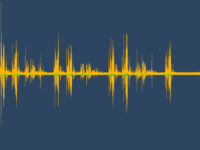Taking notes in class. Signing a lease. Making a grocery list. All of these activities used to require a very important tool: our very own handwriting. Nowadays, we tend to rapidly jot down notes during class on our laptops or use autofill to put signatures on important documents. Because the faster we get these things done, the better … right?
Wrong! Though it is possible for adults to type over 40 words per minute compared to the measly rate of 40 handwritten letters per minute, we tend to gloss over the meaning of words and fail to absorb potentially important information when we type. Handwriting is a crucial tool for proper brain development and improves learning outcomes.
Our relationship with handwriting begins at a young age as children learn the alphabet through tracing, repetition, and reading. Handwriting is closely linked to activity in particular brain regions. The brain itself has four main lobes: frontal, parietal, temporal, and occipital. Both writing and speaking are associated with the frontal lobe (also important for motor control and reasoning), as well as the parietal lobe which helps humans interpret language.
Aside from the physical act of handwriting improving our fine motor skills, writing more can impact our recall abilities and memory. A 2021 study based in Japan from the University of Tokyo noticed enhanced brain activation after writing down appointments on a physical calendar as opposed to on a digital tablet or phone. Functional magnetic resonance imaging showed that physical writing sparked activity in the bilateral hippocampus (major learning and memory structure), occipital lobe (visual cortex), and similar frontal regions.
“A 2021 study based in Japan from the University of Tokyo noticed enhanced brain activation after writing down appointments on a physical calendar as opposed to on a digital tablet or phone.”
Although a somewhat outdated statistic, a paper titled “The Influence of iPads on Course Performance and Student Perceptions of Learning in Human Anatomy” described a massive jump in iPad usage amongst undergraduate students: 16% to 47% between 2013 and 2014. This trend appears to be continuing and the number has likely increased in the year 2023.
It may be surprising that differences exist between cognitive brain activity in tablet and stylus users compared to the traditional pen-and-paper experience. Interestingly, handwriting on paper compared to handwriting on a tablet yielded increased activation of the brain and this is likely because “the material substrate of paper provides physical, tactile, spatiotemporally fixed cues to the length of the text” according to a study in published in the International Journal of Educational Research. This is also very important for visual learners, as writing on paper may allow them to remember specific details within the context of where they are on the page.
“Interestingly, handwriting on paper compared to handwriting on a tablet yielded increased activation of the brain and this is likely because ‘the material substrate of paper provides physical, tactile, spatiotemporally fixed cues to the length of the text.’”
Much of the existing literature on handwriting illustrates a causal relationship between handwriting and improved academic performance. This is attributed to the fact that writing concepts in your own words and creating more concise memos is a more interactive form of studying.
A paper titled “Motor Learning of Handwriting and Developmental Dysgraphia” was published in July of 2023 and examined the impacts of handwriting disorders (HDs) on children in elementary school. The term “dysgraphia” refers to neurological disorders involving the impairment of writing ability. This can manifest as wrist instability, more jagged handwriting, and a lower word per minute rate. The authors state “the hypothesis of cerebellar dysfunction in children with HDs is accepted in the literature,” meaning that not only does our handwriting impact our brain, but our brain impacts the way we write. The authors highlight the need for more research on this topic.
Handwriting also shifts as we age. The IRCCS Neuromed Institute of Italy partnered with the University of Cincinnati to study the differences in handwriting between younger adults, middle-aged adults, and older adults using machine learning. One major pattern emerged: older adults tend to have smaller stroke sizes which is a sign of declining ability. Unfortunately, it is natural for our fine motor skills to decline as we age. But, we can prolong this decline by engaging our motor skills in other activities. When we repeat certain motor activities, it strengthens existing neuron networks in our brain. For example, taking time to write in a journal daily, picking up crocheting or knitting, or doing puzzles with smaller pieces will generally improve our motor abilities as we go through the aging process!
Culturally and historically rich, integral to society and communication, and key in taking an active role in learning, the ability to write by hand is not something to take for granted. Going “old-school” isn’t necessarily a bad thing and might even help you boost your grades!
- Children (2023). DOI: 10.3390/children10091512
- Frontiers Aging Neuroscience (2022). DOI: 10.3389/fnagi.2022.889930
- Frontiers in Behavioral Neuroscience (2021). DOI: 10.3389/fnbeh.2021.634158
- International Journal of Educational Research (2013). DOI: 10.1016/j.ijer.2012.12.002
- Journal of Teaching and Learning with Technology (2018). DOI: 10.14434/jotlt.v7n1.23973






